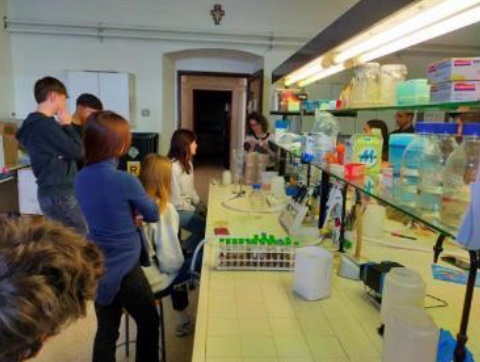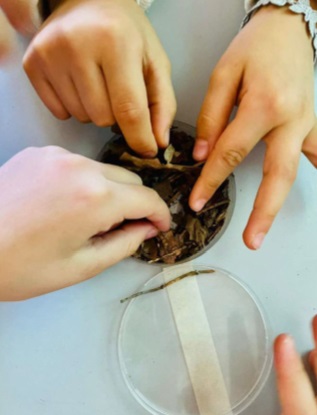Soil degradation – soil surface erosion by water
Description
Age of pupils: 13-15 years
It is a small-scale irrigation experiment that simulates an intense rainfall event and demonstrates the differences between runoff and runoff water, their proportions and sediment content under grass and bare surfaces.
Duration of the session: approx. 15 minutes
Materials needed:
- Two metal baking trays with slots at the bottom, with fitted metal spill triangle (Figure, picture 1), placed on a sloping wooden frame
- gravel, sand or loamy sand, lawn brick, plastic bowls and boxes (Figure, picture 3 and 4)
Key issues: the erosive effect of raindrops falling on a plant-covered soil surface is much smaller than that of raindrops falling on a bare soil surface.
Information to be provided to participants
Rainfall on a bare soil surface quickly soaks the thin upper layer of the surface and, lacking the holding and filtering effect of roots, moves the soil particles to downslope. There are differences between runoff (moving on the surface) and infiltration (moving into deeper layers) water, their ratio, and sediment content under grass and bare soil surface.
Interaction with the participants
Two demonstrators (or volunteer students) start watering the two surfaces simultaneously and continuously from two approx.5-liter cans with sprinkler heads, for about 10 seconds. We collect the water that appears under the trays (infiltrated) and the water that runs off the lower rim of the trays on the surface . Under the bare soil: we find more runoff water and more sediments in it (in the bowl), less infiltrated part (in the box), than under the grass.



